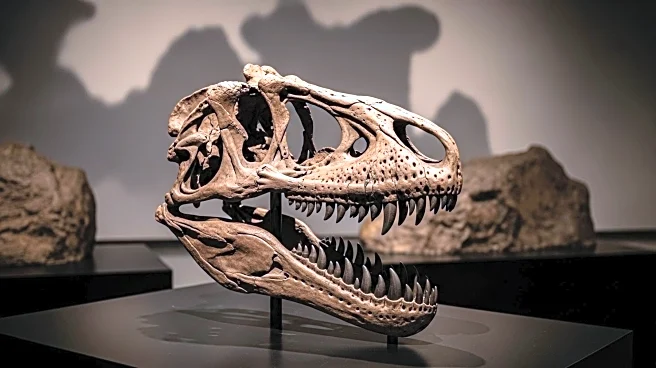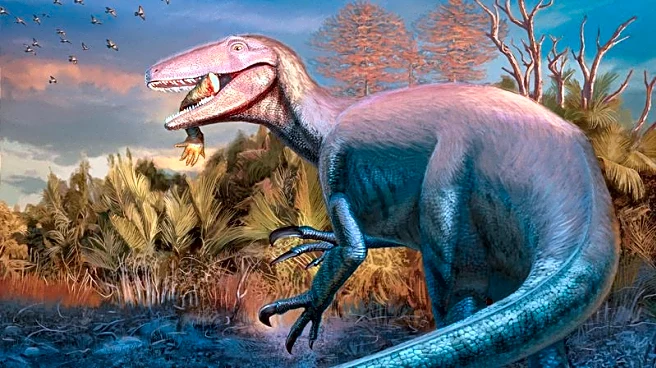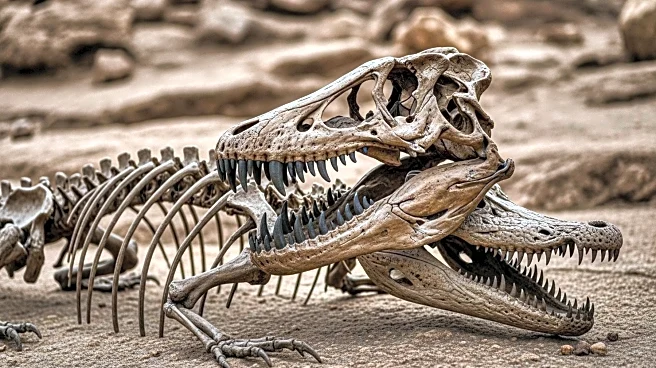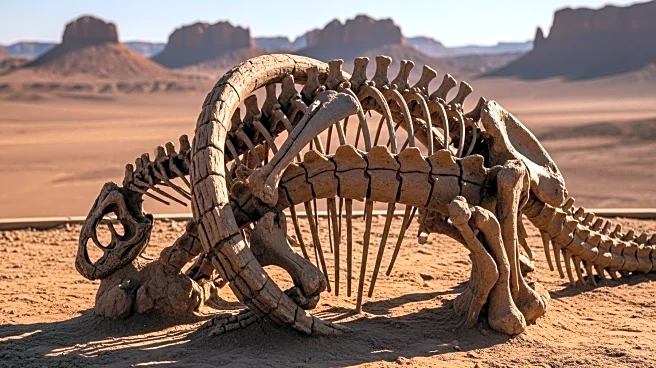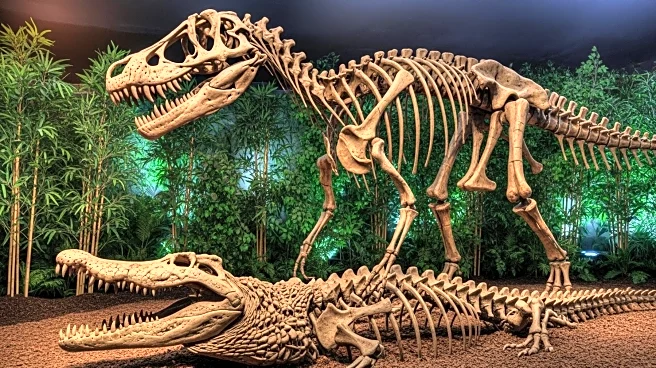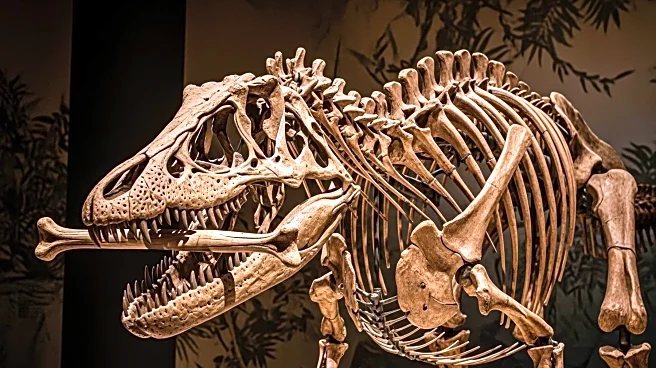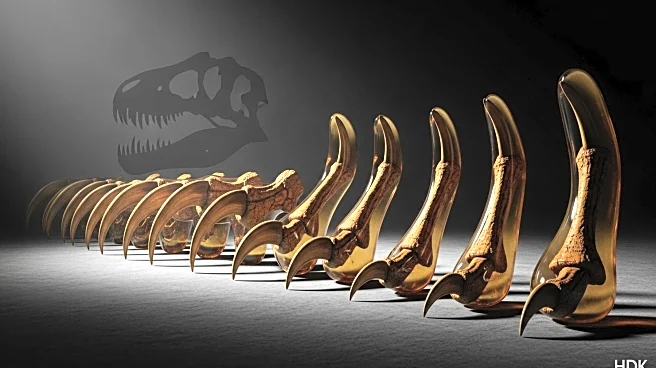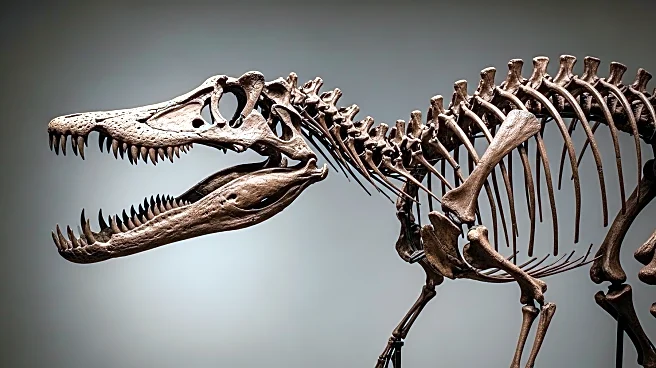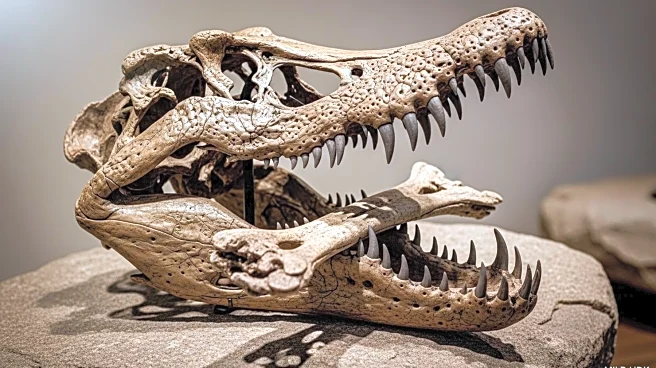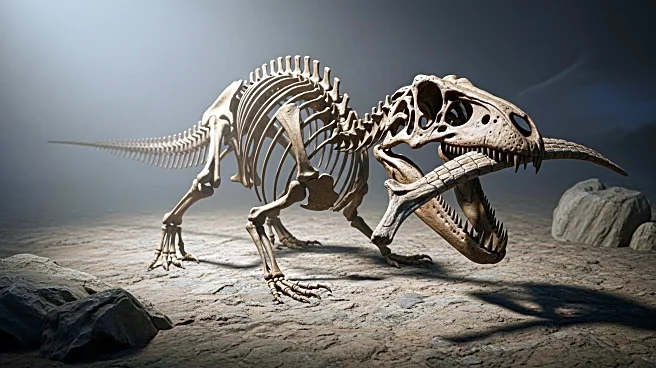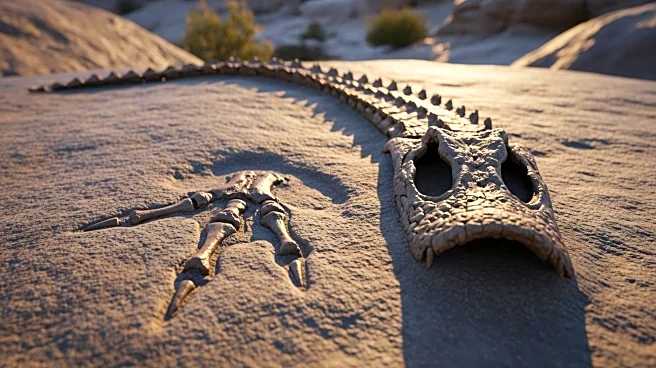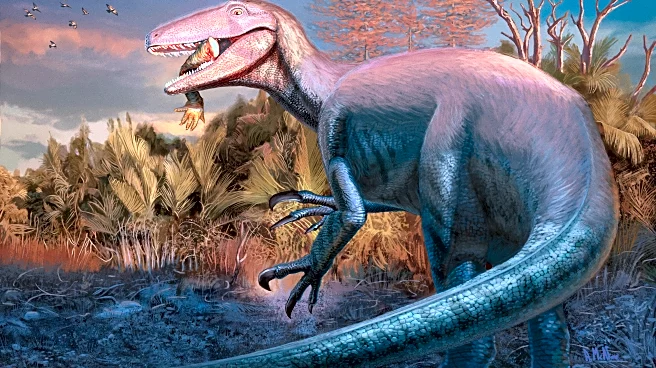What is the story about?
What's Happening?
A new species of dinosaur, Joaquinraptor casali, has been discovered in Argentina, fossilized while consuming a crocodile-like creature. This 23-foot megaraptoran lived during the late Cretaceous period, approximately 66 to 70 million years ago. The discovery includes a skull, arm, leg, and tail bones, with a crocodile bone preserved in its jaws. Joaquinraptor casali is considered one of the most complete and latest-surviving megaraptorans found, providing valuable insights into the predatory behaviors and ecological roles of these dinosaurs.
Why It's Important?
The discovery of Joaquinraptor casali fills a significant gap in the understanding of megaraptorans, a group of dinosaurs known for their massive claws and predatory prowess. This find offers a more complete picture of the physical attributes and potential feeding strategies of these apex predators, contributing to the broader understanding of dinosaur biodiversity and ecosystem dynamics during the late Cretaceous period. The presence of a crocodile bone in its mouth suggests specific dietary preferences, enhancing knowledge of prehistoric food chains.
What's Next?
Further research is anticipated to explore the dietary preferences and feeding strategies of Joaquinraptor casali. Scientists aim to analyze the fossil's bone structure and sedimentary context to reconstruct its living environment and interactions within its ecosystem. Comparative studies with other megaraptoran fossils may provide additional insights into the evolutionary history and diversity of this group.
Beyond the Headlines
The naming of Joaquinraptor casali in honor of Lucio Ibiricu's son Joaquin underscores the personal connections and stories behind scientific discoveries. This highlights the human element in paleontology, where personal experiences can influence the interpretation and naming of new species.
AI Generated Content
Do you find this article useful?
